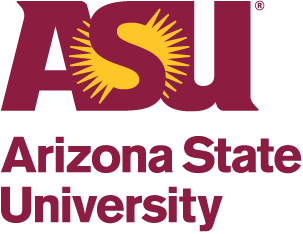Recruiting During COVID-19: Lessons Learned and Getting Most Out of 2021 was originally published on Firsthand.
2020 was a challenging year for recruiters. Talent acquisition teams learned to be effective during the pandemic. Adapting meant meeting demands from companies, as well as shifting tactics around a new, remote workforce.
Unemployment rates skyrocketed in April 2020. A closer look at the data reveals wage growth up 7.2% from 2019. These aren't the only fluctuations that have impacted industry strategies for recruitment.
Read on to learn more about the impact of COVID-19 on recruitment and which lessons HR professionals are taking away from this unprecedented year.
How Has the Labor Market Changed?
The labor market has been most impacted in three key sectors: lower-wage earners, young workers and people in consumer-facing or hospitality-related industries have been hit the hardest.
While unemployment hit historic highs, the brunt of the job loss hit the bottom 25% of wage earners. These lower-wage earners made up for almost 80% of job losses in 2020. Higher-wage earners were able to switch to remote work with greater ease. Since individuals in this demographic kept working, their wages grew after a rebound in the early summer.
The pandemic has also hit younger workers. As many as 20% of Americans aged 20 to 24 lost their job in the early stages of the COVID-19 pandemic.
Consumer-facing industries bore the brunt of wide-scale shutdowns and were negatively impacted by the enforcement of social distancing. Leisure and hospitality saw a sharp 48.3% decline in payroll employment from February to April 2020.
Labor Market Activity: Hiring Stop and Go
Employers relied on business insurance and cost-containment strategies to keep them afloat in 2020.
Common strategies included:
- Hiring freeze
- Delayed raises
- A halt on wage growth
By the end of March 2020, 42% of companies reported freezing or reducing hiring.
Even six months into the pandemic, many companies were implementing cost-reduction measures. 20% of companies had a hiring freeze in effect, with 3% that reported a plan not to take action regarding hiring until the end of the year.
Recovery is happening, but much like the job losses, it's not equal across industries. Sectors hit hardest are looking to make a comeback in 2021. Some industries, like entertainment, may take five or more years to get back to pre-pandemic employment levels.
Key Lessons: New Recruiting Practices That Work
What does all of this mean for recruiters? It means that everything, from work environments to employee expectations, needs to be reanalyzed. New trends should impact how, where, when, and who you hire. Here are some tips to help you recruit talent in this new environment.
- Define Your Employment Brand. Every company has a reputation. Candidates are looking at more than salary and benefits when making decisions. Online presence, workplace culture, and a company’s stance on social issues are just as relevant. In response, recruitment leaders are investing in employer branding. 64% of talent professionals are expanding their employer branding budget for 2021.
- Focus on the Network. COVID-19 has shown us the strength of community. A collaborative, people-first attitude can help recruiters make connections in the post-coronavirus world. It's essential to leverage professional platforms, like LinkedIn, to build business relationships. Recruiters are seeing the benefits of working together to find quality talent.
- Preserve A Healthy Pipeline. Even if you're not currently hiring, you need to maintain your recruitment pipeline. Planning is the first step in developing a recruitment strategy that locates the best candidates. To find talent, optimize all forms of outbound promotion and engagement with new content, fresh messaging and personalized approaches. Be sure you keep potential talent engaged with open communication and honesty.
- Make the Most of Virtual Processes. During the peak of the COVID-19 pandemic, 70% of workers who could work from home were doing so via telework. Talent acquisition teams need to advertise their willingness to manage a remote workforce. Offering virtual training sessions and video conferencing options will show potential candidates your willingness to adapt to changing workforce trends.
- Pay Attention to New Value Drivers. Now that people have a taste of remote work, employees may seek out employers who are willing to offer flexible work arrangements. 82% of companies plan to allow remote work opportunities for employees after the pandemic. Staying competitive may mean adopting this new standard.
The Talent is There: Find and Keep it
A holistic approach to a healthy business includes solid recruitment processes and agile growth strategies. As companies have adapted to remote work, virtual offices, and long-distance recruiting tactics, a few things do remain the same. Providing the best environment for workers with the best benefits will always be a win.
While hiring freezes are starting to thaw, job postings are still left unfilled. These new challenges are part of the new norm. Learning from the lessons of the previous year is essential for staying on the cutting edge of recruitment.
__________________________________________________________________________
Sam Meenasian is the Operations Director of USA Business Insurance and BISU Insurance and an expert in commercial lines insurance products. With over 10 years of experience and knowledge in the commercial insurance industry, Meenasian contributes his level of expertise as a leader and an agent to educate and secure online business insurance for thousands of clients within the Insurance family.



